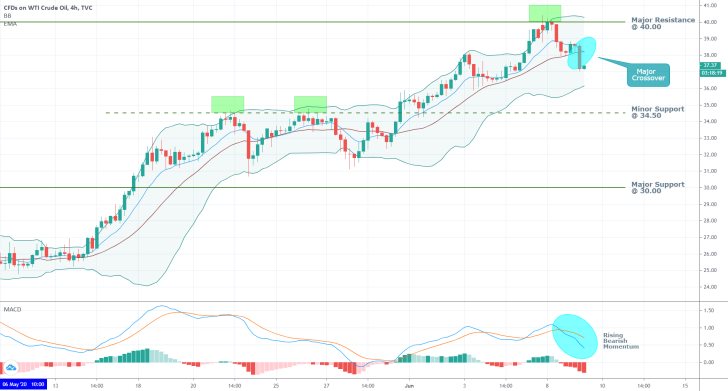
The energy market was slightly jolted at the beginning of this week, following the conclusion of the 11th OPEC and Non-OPEC Ministerial Meeting last Saturday. The price of crude oil fell by 3$ per barrel on renewed investors' fears over a potential new supply glut.
In the Minutes report that was published on OPEC's website after the meeting, it was stated that member and non-member states continue to abide by the accords for production cuts that were reached during the previous (extraordinary) meeting, as countermeasures to offset the impact of the coronavirus fallout.
Even though global demand for crude is on the rise once again as governments gradually ease their containment restrictions and economies are allowed to reopen, OPEC and OPEC+ still estimate that aggregate demand would fall by around 9mb/d for the entire year.
This is one of the two reasons as to why energy investors' fears prevail, despite the evident stabilization that has taken place in the market over the last several weeks.
Primarily, their fears stem from the possibility that the Ministerial Committee's attempts to drive down production may not be sufficient to offset a potentially bigger drop in global demand.
Moreover, there is a genuine likelihood that not every country manages to meet the proclaimed target cuts. This would mean that, in reality, the aforementioned supply glut would continue to widen, despite the touts of OPEC and OPEC+ concerning the size of their production cuts under their agreement.
" In view of the current fundamentals, and following the agreement reached at the 179th Meeting of the OPEC Conference, all Participating Countries: […] Subscribed to the concept of compensation by those countries who were unable to reach full conformity (100 per cent) in May and June, with a willingness to accommodate it in July, August and September, in addition to their already agreed production adjustment for such months."
So far, it is uncertain as to what the size of such a potential rift might be. This is the primary reason for the emergence of the current bearish correction.
The downturn might be bolstered if it is announced that there are huge discrepancies between the agreed-upon production cuts and the actual size of the realized cuts.
From a purely technical standpoint, however, the bearish correction is unlikely to be protracted for too long.
As can be seen on the 4H chart below, the correction was initiated from the psychologically important resistance level at 40.00.
This was the price action's first attempt at breaking out above it, which means that very probably it will not be the last.
The crossover of the 10-day EMA (in blue) below the Bollinger Bands' middle line confirms the strength of the bearish momentum that is exhibited on the MACD below.
The short-term correction is likely to be concluded once a new dip is reached, which, in turn, would allow the market bulls to use this new swing low to enter long at a discount.
A likely contender for such a reversal point is the minor support level at 34.50.





















